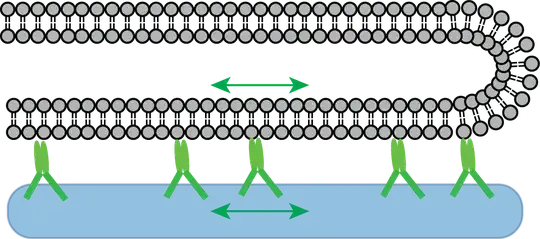Is the first time that I am asking something here, so I apologize if it is not the place, or I am not clear enough.
I am working on this problem where I have a protein place between 2 surfaces (top and bottom). The protein is bound originally to the surface in the top (a membrane) and can diffuse in this surface with a diffusion coefficient Dt. However, when the protein gets in contact with the second surface in the bottom, the protein can bind to this surface and diffuses with a diffusion coefficient Db. Do you think that it is possible to estimate an effective diffusion coefficient for the protein? Or the lower motility will be the limiting factor? Db
